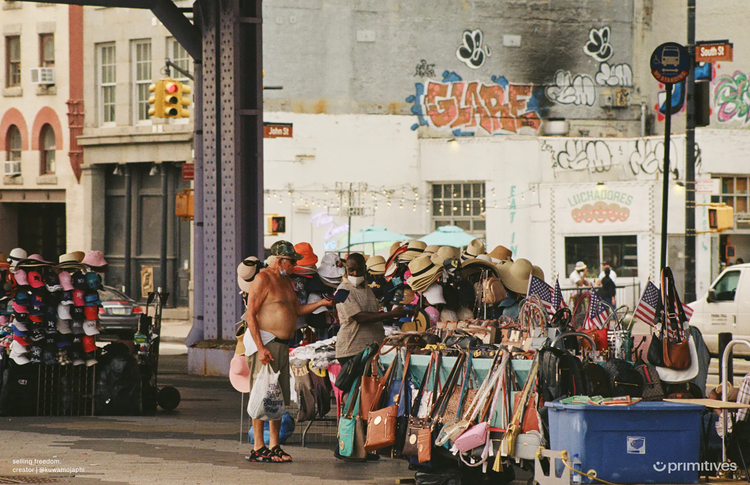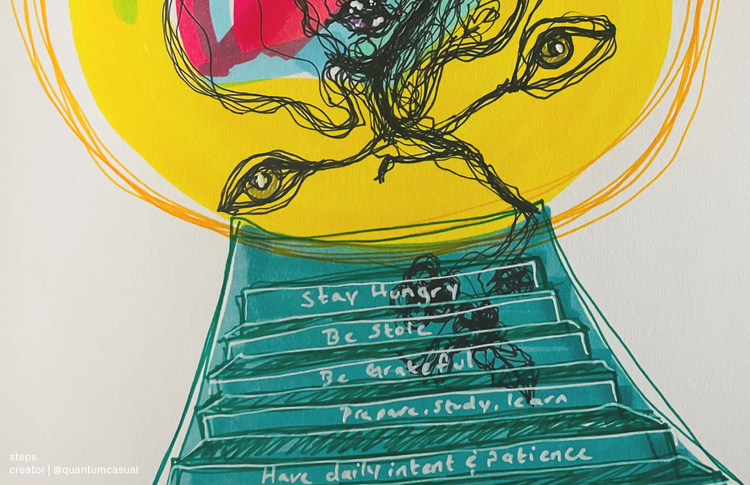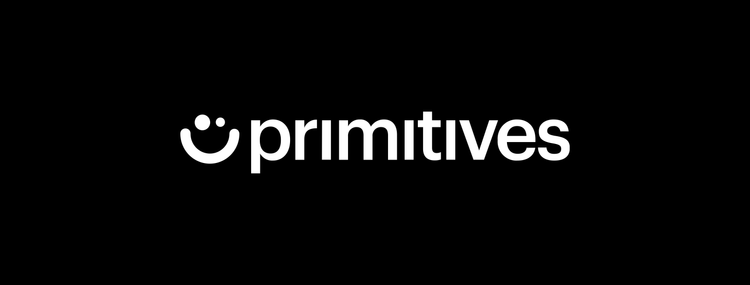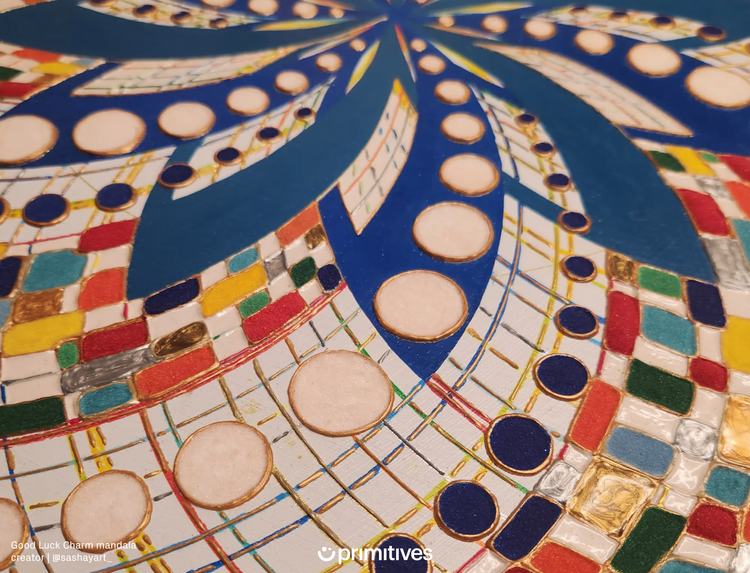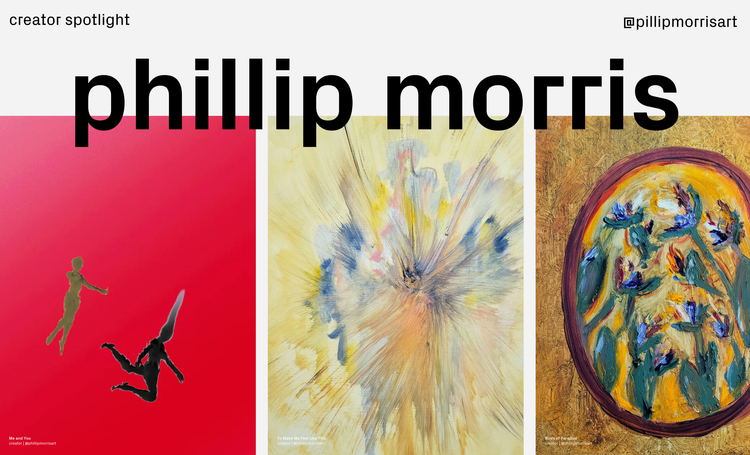ana roman is changing the way we experience music
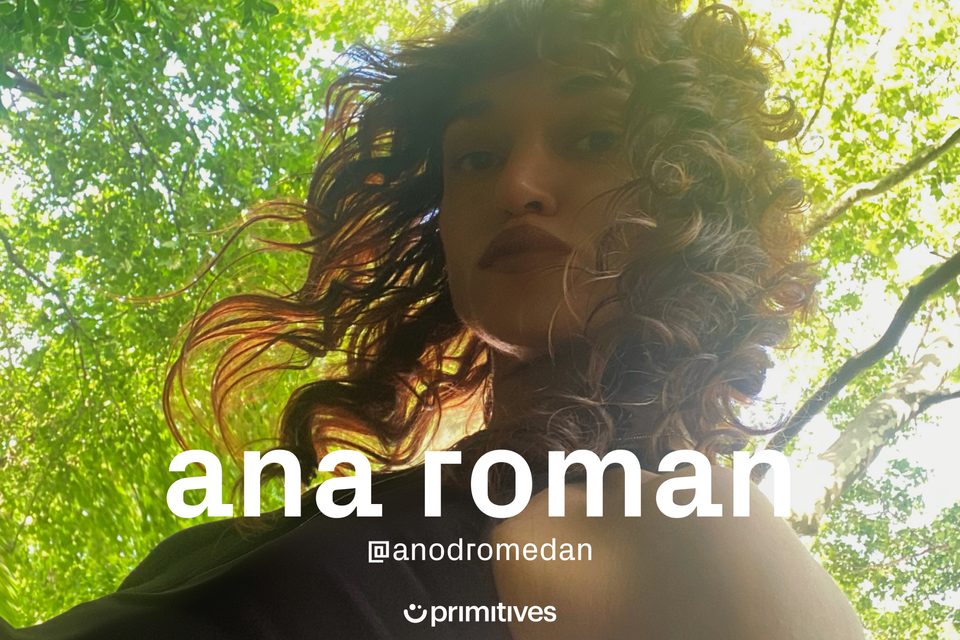
we sat down with nyc-based dj & producer, ana roman (@anodromedan) to discuss their creative influences, the impact they hope to make in the music world, and what it means to break down technical barriers. their music is hypnotic and rhythmic, moving between meditative repetition and uptempo electronic beats. ana has created a unique stage persona, skulptor, that represents their relationship with identity, data dignity, and gender fluidity.
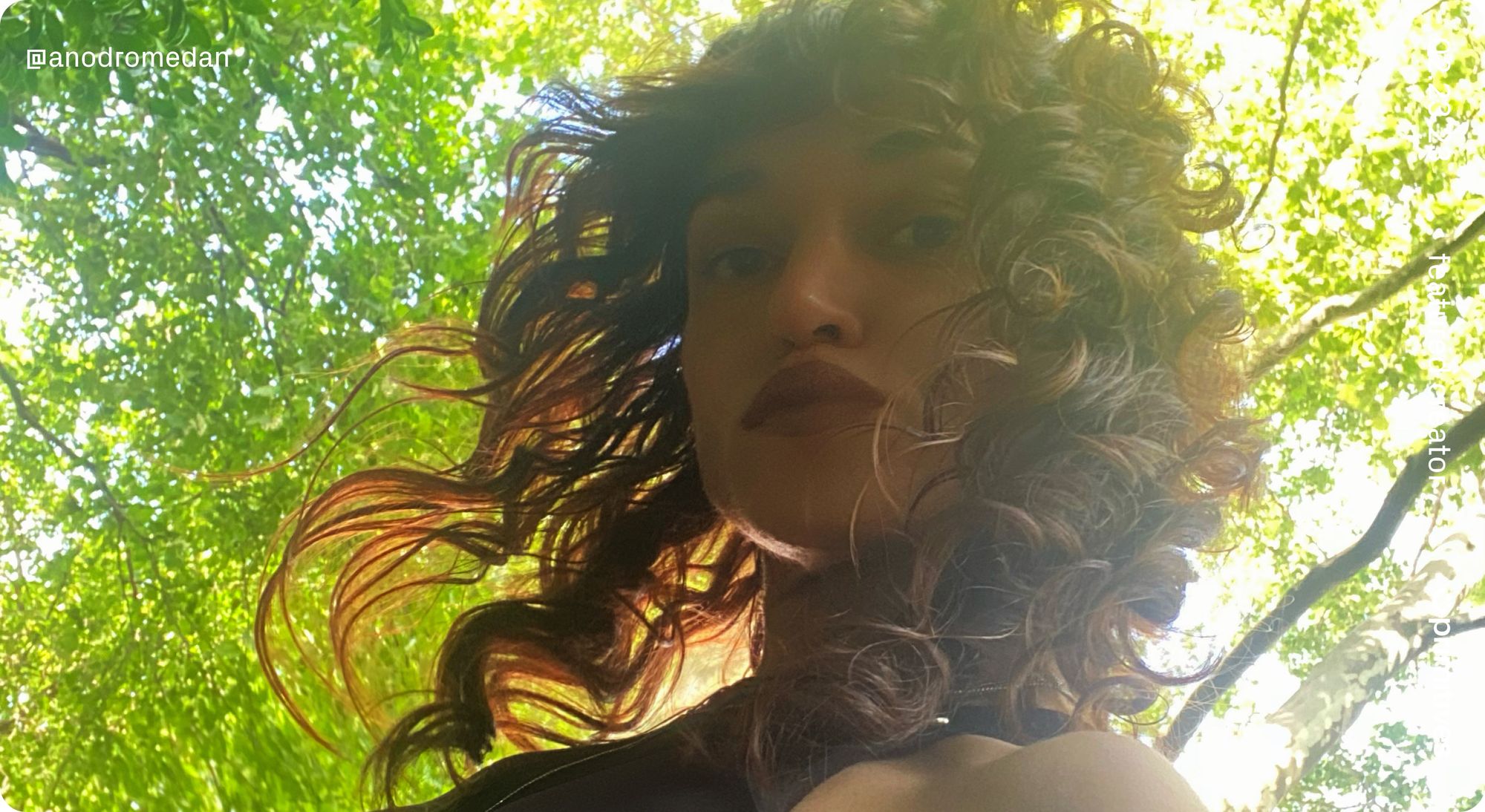
sydney: tell me your story! let’s start with your first creative outlet and how you grew from there.
ana: i started with dance and gymnastics - more solo and physical sports. i got injured, and long story short, i got into piano when i was six, and my music practice just grew from there. i taught myself music programming when i was 17. i liked electronic music and i got into producing my own stuff. on my tracks, i’m the producer, songwriter, mixer and mastering it all. then i got into the digital art space during the lockdown where i became very fascinated with gans (generative adversarial networks).
sydney: so what / who is skulptor and how is it related to your music?
ana: for context, i was detained in two different airports because of faulty data surveillance; they had mistook me for someone else (essentially due to coded bias). the first time i was coming back from morocco and then the other time i was coming back from india. that’s when i realized the issues that the documentary, “coded bias,” explores, are very real. but during the lockdown i became very lonely and needed an outlet to improve my mental health. so in late 2020 i trained my own face on gans, and pytorch, to create a whole digital family from my face. i fed the imagery into some open source code. from there, skulptor came to exist.
skulptor is a digital persona (crafted using a.i.) producing future-frequencies one track and performance at a time.
creating skulptor sprung from data dignity and transparency - a right that is not reserved for marginalized communities. and due to my experiences, i processed that kind of interrogation through art. i realized a lot of surveillance cams and such are placed in lower income, marginalized neighborhoods which inspired a lot for me. from there it got more poetic and generative and i began to train my own face through generative models. then i combined it with my music and made the faces move and shift with java script and other open source libraries. visually and sonically, i realized skulptor had to go further than 'uncanny valley.' i had to get in touch with my mestiza and gypsy roots. also, skulptor is fluid and agender, meaning it doesn’t identify with any gender. it constantly is transforming because it's regenerating. so skulptor is sculpting — sculpting frequency, sculpting music, sculpting sound design and sculpting gender and transparency.
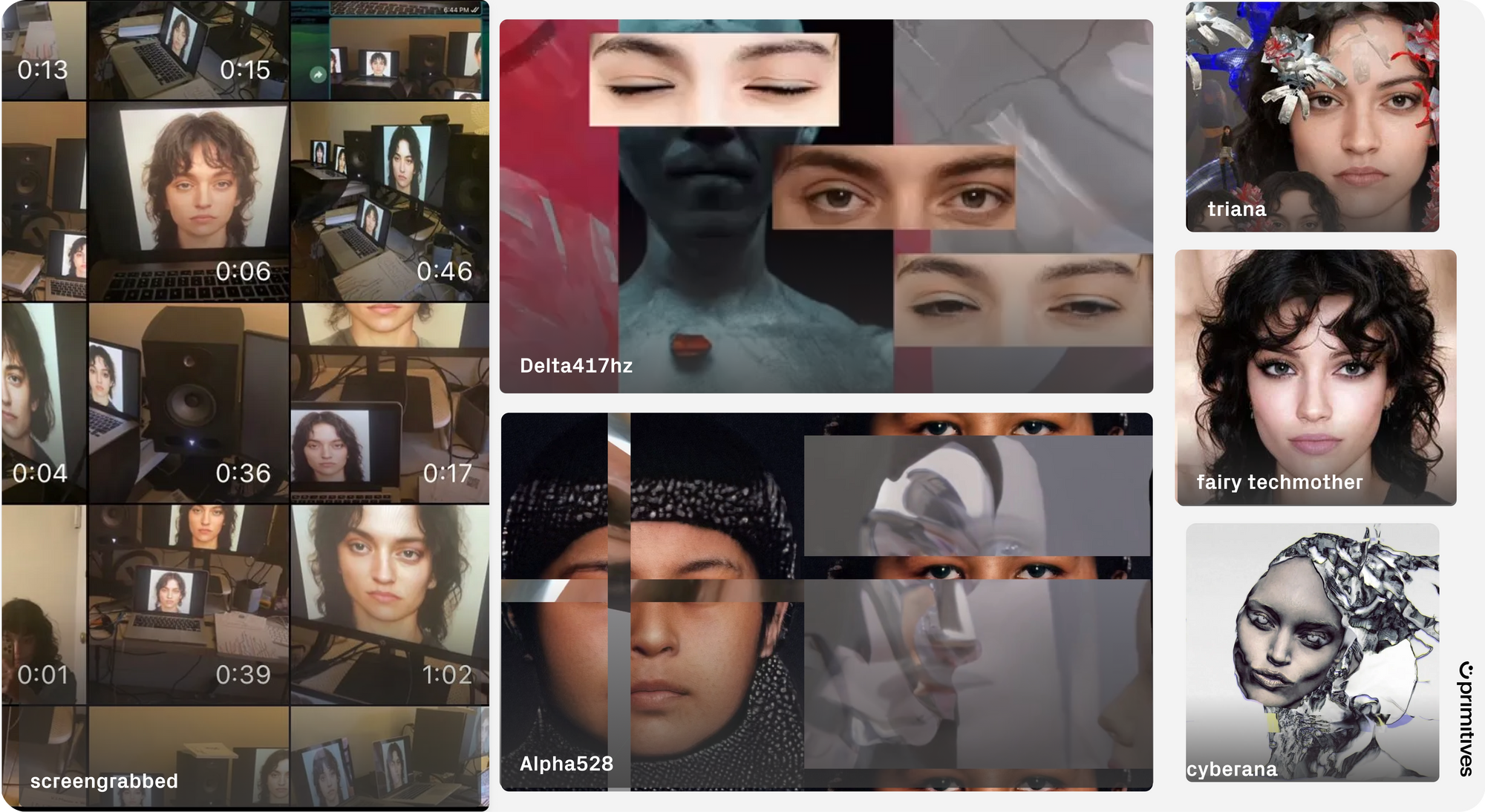
sydney: was your exploration of making of skulptor the conduit to getting into this space of nfts and web3?
ana: yeah. i knew skulptor needed to be in that space. to start, i’m not so much a futurist as much as i am a creative technologist. i wanted to get out of my comfort zone of just being at a table doing live electronics. and i knew that i would get more visibility in the space than with the images, and i wanted to make generative art instead of just putting my stuff on bandcamp and being a dj.
skulptor is a digital persona producing future-frequencies one track and performance at a time.
i don't believe in staying in the same formats all the time as an artist, especially if i'm gonna be in the web3 and nft space. and instead of saying “nft space” i would rather say open format, decentralized space that's accessible to people. so much about web3 is about becoming decentralized and having data dignity. that's why it'd be foolish for me not to be a key player in the space.
sydney: it's really interesting how you crafted skulptor based on your life experiences and desire to learn about emerging technology. and how from that you merged into so many new spaces within tech, art, and culture.
ana: yeah, well instead of seeing a.i. and generative voice etc. as a threat, i see it as remix culture, because that's what skulptor is. even though it's me producing everything, it's generative — and generative art by nature is remix culture. if you think about it, it's like technological punk rock. it's communities getting together and mashing things up and sharing and open source and teaching people things. i love it because it gives me more visibility and the ability to split royalties if somebody wants to use my voice or if i want to use somebody else's.
"Alpha528" by @anodromedan — part of "brain.wav: a.i.-meditations" a short Film originally performed live with touch-designer, live-coding, and granular synthesizers at Refraction Festival 2023. Produced/Directed by Ana Roman (skulptor)
sydney: does this idea of remix culture relate to your music too?
ana: it's very important for me to work with singers and to help produce for other women. skulptor at its core is a cyber-feminist statement. so naturally i wanna be able to help singers or female artists who are really badass while i stay in the background. it's really important for me to evolve in service to people, and i think that's what web3 is for me too, it's remix culture — it's helping people, it's data dignity, it's information sharing, and it's open source. and if you're gonna say that you're open source and decentralized, you also gotta walk the walk in real life.
sydney: and what’s your goal in regards to developing skulptor and getting more visibility within the web3 world?
ana: my goal is to help people navigate all of this, especially the trans community. i think if you're running a company, collective, or organization and you forget to install an ai ethics board or completely forget to to create awareness around marginalized communities, then you're doing yourself a disservice. for example, given skulptor is fluid, early on, people thought i was transitioning. so the way i was positioning skulptor resonated with trans people. i consider myself fluid and it's very important that stays at the core, even when skulptor is femme. i also think back to your question of how i got into the space. one thing i noticed in the nft space is that it's not inviting for certain communities. it's changing now, but i think a lot of these music nft founders aren't speaking to it enough - we need to improve access to all these spaces.
sydney: how do you envision skulptor’s future?
ana: you have to be an optimist, and be the change that you wanna see. i've been told that all my life from my heroes. i was thinking about dj the other day and why he did primitives. i'm sure he was like, i have to be the change that i wanna see and make this barrier to entry obsolete. you have to be the founder and ceo of your passions. that comes with responsibility, and for me that means nurturing others’ on their digital art or web3 journey in all decentralized spaces.
sydney: i know you did a live performance recently, tell me about that!
ana:. i recently performed at refraction festival at zero space in nyc. it was the first time i performed a live audio visual piece. my collaborator was easterner, a live-coder and artist admire who i hope to work with on other projects. for refraction festival, i took skulptor and brought all the faces to life and made them part of a whole film i created and performed to. i've never seen the faces in that way on the big screen. i was so happy the whole time i was up there performing! the skulptor projection was also showcased in five different cities for the first ever nft biannual.
away from creative tech, i usually do a lot of dj projects and then i produce and release tracks once a month. or i do compilations with other labels in electronic music that i love.
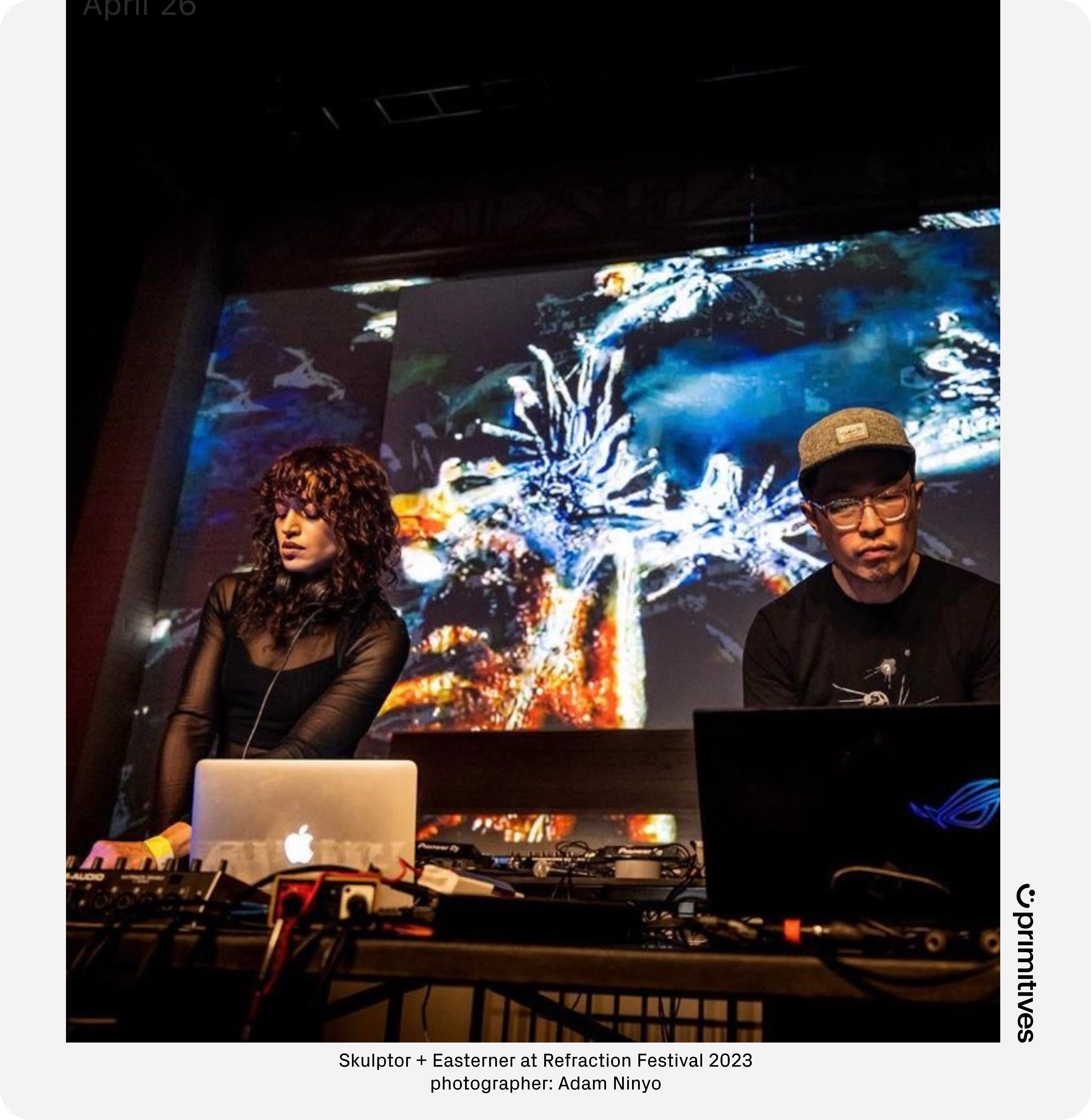
sydney: what do you like most about primitives?
ana: i love primitives because you could explain it to my mom. i was really thankful to be in the space very early on.
add one of ana’s moments to your collection by visiting their profile
--
primitives is building an online space for creatives. we empower anyone to discover new creators, mint and share work, build collections, and join communities. keep up with us on twitter, instagram, tiktok, and at primitives.xyz

